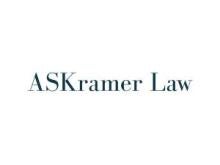Do the tax hedge rules apply to consolidated tax groups?
Yes. The Treasury Regulations treat members of a consolidated corporate group as divisions of a single entity.[1] As a single entity, the risks and positions of all group members must be considered to determine whether a transaction qualifies as a tax hedge under Treas. Reg. § 1.1221-2. This means that a transaction entered into by one member to hedge its own risks might not be a qualified hedge if the transaction does not, in effect, manage the risk of the consolidated group as a whole. In other words, hedges are evaluated on an enterprise-wide basis.
How do consolidated groups apply “single entity treatment”?
Single entity treatment eliminates the requirement that the hedge and the hedged item must be held in the same legal entity.[2] This means that one group member’s risks are considered to be the risks of the other group members. As a result, consolidated group members can enter into hedges by concentrating the substance of those trading activities in one member of the group (hedge center) without the need for intercompany transactions to be entered into between the hedge center member that is hedging the risk with a third party and the group member that is actually exposed to the risk.
How are intercompany hedge transactions treated by consolidated groups?
An intercompany hedge between two group members is not a qualified tax hedge because it does not reduce the risk of the consolidated group as a whole.[3] Although it is not a tax hedge, it is not ignored for tax purposes. Rather, the gain or loss on the intercompany transaction is accounted for under Treas. Reg. § 1.1502-13 and the other tax rules addressing intercompany transactions, including (if applicable) the mark-to-market rules at Code § 475.[4]
How is the separate entity election made and how is it applied?
Consolidated groups can elect to adopt separate entity treatment so that each consolidated group member is treated as a separate legal entity, rather than as a division of a single entity.[5] A separate entity election is filed with the consolidated group’s federal income tax return for the taxable year that includes the first date for which the election is to apply. Although the Treasury Regulations do not explain how separate entity treatment can be revoked once made, it is likely that IRS consent would be required to revoke it.
If any group member enters into a hedge with a third party and that hedge relates to the risk of another group member, the transaction is not a tax hedge unless the member entering into the third-party hedge does so as an agent of the member whose risk is being hedged, or the two members enter into a “back-to-back” hedge. The hedge and the hedged item would be recorded in the same legal entity. An agency agreement can be entered into to treat the hedge center as an agent for the member whose risk is being hedged to place the hedge and the hedged item in the same legal entity. An intercompany hedge could shift the risk to a hedge center by entering into a separate transaction between group members such that the hedged item is transferred to the hedge center.
Some consolidated groups elect separate entity treatment because their members hedge their own risks and do not coordinate with any other group members. For example, a consolidated group with both a manufacturing corporation and a finance corporation might have the two members engaging in their own hedges without considering the risks and hedging activities of the other company. In this situation, the consolidated group should carefully consider whether to make a separate entity election. Without a separate entity election, members that hedge their own risks with third parties might find certain transactions do not qualify as tax hedges when the risks of the entire consolidated group are considered as a single entity. In other words, under the single entity approach, one member’s risks might economically offset the risks of another member, precluding the first member from entering into a qualified tax hedge with a third party.
What are the consequences of a separate entity election?
A separate entity election has two key tax consequences. First, the risks of one member are not treated as the risks of other members.[6] And second, an intercompany transaction is a tax hedge if the following requirements are met:
- The member’s position would qualify as a tax hedge only if entered into with an unrelated party.
- The position of the other member is marked-to-market under the marking member’s method of accounting.[7]
- For an intercompany hedge engaged in by consolidated group members with a separate entity election in place, the character and timing rules of the consolidated group regulations at Treas. Reg. § 1.1502-13 do not apply to the intercompany hedge and the character of gain or loss is ordinary.[8]
The separate entity election must follow Treas. Reg. § 1.1221-2(e)(2)(iv).
Can a consolidated group member be treated as a dealer for tax purposes?
Yes. If in the ordinary course of its business a consolidated group member holds itself out as being willing and able to enter into securities derivative transactions on a regular basis, that member can be viewed as a securities dealer for purposes of the mandatory mark-to-market rules at Code § 475 even if that member only enters into such transactions with other group members.[9] If a group member elects into Code § 475 to be treated as a dealer with respect to its commodity dealer activities, that group member treated as a commodities dealer under Code § 475.
Must all consolidated group transactions be subject to single entity or a separate entity treatment?
Yes. All transactions entered into by consolidated group members are subject to either single entity or separate entity treatment. Diversified businesses with some activities hedged through a hedge center while other activities are hedged on a separate basis can find this “all or nothing” requirement problematic. Separate entity treatment is not appropriate for some transactions (or members), while a single entity approach may not be appropriate for other transactions (or members). Using intercompany transactions or agency agreements to transfer hedges between group members pose additional challenges that need to be carefully considered. Consolidated groups face unique challenges in their hedging activities.
What is required for a timely hedge identification between consolidated group members?
As a single entity, a consolidated group member that enters into a hedge with a third party must identify the hedge on the day it is entered into.[10] In addition, on a substantially contemporaneous basis, the member entering into the hedge must identify the hedged item and/or hedged aggregate risk—even if the item or risk relates primarily (or entirely) to another group member.[11] The Treasury Regulations do not provide any guidance as to how the hedging member must meet its requirements for proper and timely identification of the hedged items. Accordingly, the same rules and procedures that apply to separate entities equally apply here.
For consolidated groups that have elected separate entity treatment, the hedging member’s intercompany hedges entered into with another group member can identify the item or risk being hedged in identifying the intercompany transaction.[12] When group members enter into intercompany transactions to transfer risk to a consolidated group’s hedge center, the identification requirements may be met if two sets of requirements are met. First, the group member transferring the risk to the hedge center must identify the intercompany transaction as a hedge and must identify the hedged item. Second, the hedge center must identify its hedge with the third party as a hedge and identify the position resulting from the intercompany transaction as the hedged item.
What are the hedge timing requirements for consolidated groups?
Gains and losses attributable to qualified tax hedges entered into by group members must clearly reflect the group’s income. Treas. Reg. § 1.446-4 requires a taxpayer to match the timing of gains and losses attributable to a hedge with the timing of the gain or loss with respect to the item or risk being hedged. Subject to possible application of Code § 475, a consolidated group that is treated as a single entity must account for gains and losses on qualified hedges under Treas. Reg. § 1.446-4 as if each group member was a separate division within a single corporation.[13]
Can timing mismatches result under single entity treatment?
Yes. Timing mismatches are possible when a consolidated group is treated as a single entity because Treas. Reg. § 1.446-4 does not apply to any potential scenario that is already covered under Code § 475(a).[14] Thus, if a hedge is tax accounted for under Code § 475, it is not subject to the matching requirements of Treas. Reg. § 1.446-4. This can create a timing mismatch within a consolidated group if—as will often be the case—the hedged item is not accounted for on tax mark-to-market. As a result, a taxpayer needs to consider the interaction between Code § 475 (if applicable) and Treas. Reg. § 1.446-4 to avoid such a timing mismatch.
As a single entity, the risks of one consolidated group member are treated as the risks of the other members so that the tax hedging rules apply based on group-wide risks.[15] Intercompany transactions are not treated as hedging transactions because they do not manage the risk of the group when it is treated as a single entity.[16]
Conclusion
The taxation of business hedges is a complex area of the law that should be part of a business’ ERM program. The Code and Treasury Regulations provide nuanced and challenging rules to understand and interpret. As a result, tax hedging requires great care. How can business hedgers ensure that they can net ordinary income and loss on their business activities against ordinary gains and losses on their hedges? First and foremost, they must keep in mind that the Treasury and the IRS do not consider “risk management” and “risk reduction” to be interchangeable terms in their consideration of how business hedges are defined for tax purposes. Next, taxpayers must be sure that they meet the tax hedge identification requirements. And, finally, they must follow the requirement that their tax hedges clearly reflect income.
[1] Treas. Reg. §§ 1.446-4 and 1.1221-2; T.D. 8653 (1996-12 I.R.B. 4).
[2] Treas. Reg. § 1.1221-2(e)(1).
[3] Id.
[4] Treas. Reg. §§ 1.1221-2(e)(1) and 1.1221-2(e)(4), Example 1.
[5] Treas. Reg. § 1.1221-2(e)(2).
[6] Treas. Reg. § 1.1221-2(e)(2)(i).
[7] Treas. Reg. § 1.1221-2(e)(2)(ii).
[8] Treas. Reg. § 1.1221-2(e)(2)(iii).
[9] Notice 96-12, 1996-1 C.B. 366. Code § 475 applies mandatory mark-to-market for securities dealers and elective mark-to-market for commodity dealers, security traders, and commodity traders.
[10] Treas. Reg. § 1.1221-2(f)(1).
[11] The 35-day limit is not a safe harbor. Treas. Reg. § 1.1221-2(f)(2).
[12] Treas. Reg. § 1.1221-2(e)(4), Example 1. The final regulations provide examples of the identification requirements in the context of a single entity approach where intercompany hedges continue to be entered into.
[13] Treas. Reg. § 1.446-4(e)(9)(i).
[14] Treas. Reg. § 1.446-4(a)(2)(i).
[15] Treas. Reg. § 1.1221-2(e)(i).
[16] Id.




 />i
/>i

